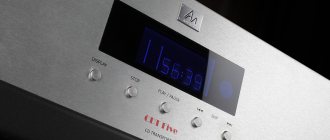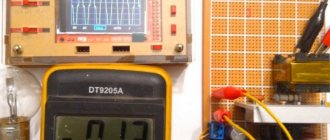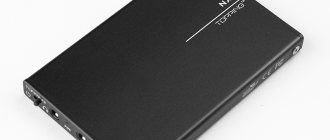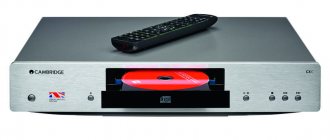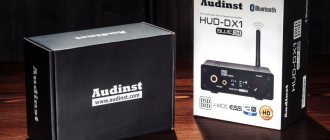APPEARANCE
Before us is one of the flagship models of active speaker systems, model R2R FR15A, in the open baffle form factor. These systems are active; mono amplifiers of our own design are already built into each channel. The main idea of this solution is a turnkey system; you just need to add a source with a volume control and provide a good power supply. No further components are required.
Externally, these are two large shields with impressive 15-inch loudspeakers and amplification modules on the rear side. For myself, I immediately noted the very solid quality of workmanship and finishing of both the shield itself and the other components. The manufacturer even has the option of making shields from marble slabs. However, I especially liked the choice of rather exotic veneer in this example, however, other finishing options are possible upon request.
DESIGN
Numerous non-trivial solutions were used in the development and implementation of these systems.
1. The basis is a wide-range, 15-inch speaker using many of the manufacturer’s own findings. A diffuser impregnated with liquid Kevlar using nanoparticles is a unique development by R2R Audio.
An unusually light moving part for its size (14 grams) and a powerful magnet ensure the movement of the diffuser is so fast that it can barely be perceived by the eyes; when the speaker is operating, it seems that it is standing still, but at the same time the speaker plays and plays loudly. The developers assure that today no paper or plastic speakers can provide such high-speed cone movement in these speakers.
Thanks to a combination of many factors and unique findings, the speaker reproduces the entire audio spectrum from 20 Hz to 20 kHz with unevenness plus/minus 2 dB, which allows you to obtain a smooth frequency response comparable to top-end studio monitors.
2. Acoustic design – open baffle. The shape and inclination of the shield, as well as the location of the speaker, were calculated taking into account many years of experience in building custom premium acoustic systems. The panel solution allows you to avoid a number of disadvantages of loudspeakers in boxes: namely, tightness, crumpled sound and resonances. The shield itself is quite heavy and does not require any additional tricks for installation such as spikes or stands. The material of the board is selected from several options, and its finishing is made to order using different coatings, including valuable wood veneers.
3. Amplifier part - it was hard to believe when we first met, but this model uses class D amplifiers. Not class A! And D, and there was no hint of digital in the sound, although we did not use analog sources at all. The amplifiers are built on the Xypex platform with a built-in digital audio signal conversion module. This module allows developers to achieve a smooth frequency response or build an individual sound system, taking into account the situation in a specific listening room. This approach makes filters and crossovers, which are not present in these systems at all, useless. The available 4 presets allow you to listen with different settings without developer intervention. Another circuit design feature of the amplifier part is original power supplies using special capacitors with ultra-low internal resistance, high-quality rectifier diodes and transformers with increased winding cross-sections. This approach protects the system from voltage surges in the network and ensures ideal power parameters. Structurally, the amplifier is mounted and placed inside a rigid metal frame and does not present barriers to natural air movement. The frame is covered with sound-transparent fabric to protect against dust.
An interesting feature is that this system does not require speaker wires. All you need here are decent XLR interconnects from the preamp to the speakers.
DAC circuits. Brief comparison
Comparison of DAC types (circuits)
The minimalistic R2R DAC circuit (part A of the image above) contains a resistor matrix (ladder). Each of the matrix resistors has a deviation from the required value. This leads to nonlinearity.
The analog filter is designed to remove aliases from digital-to-analog conversion. The analog filter has a smooth change in suppression with increasing frequency. Accordingly, all aliases cannot be deeply suppressed. These aliases can result in audible products generated by ultrasound due to nonlinear distortion (intermodulation distortion).
The analog filter has minimal low-frequency rejection. To suppress aliases in the low-frequency region, an oversampler and a digital filter are used, which has a steeper increase in suppression with frequency than an analog filter (part B of the image above). But a new problem appears: oversampling adds its own aliases that the digital filter struggles with.
Read details here >
The nonlinearity of the resistor array can be solved using a digital sigma-delta modulator (part C of the image above). Because such a modulator is a linear device. But the delta sigma modulator has problems with instability when overloaded.
When the input digital stream is DSD (1-bit sigma delta modulation) instead of PCM, a minimalistic DSD DAC contains a pair of resistors and an analog filter (part D of the image above).
Of course, real DACs are more complex devices than they are shown in the diagrams here. Questions arise about power quality, temperature stability, variation in logical levels, etc. The DAC concepts (parts A, B, C, D in the picture) provide only potential possibilities for developers. And they do not guarantee the best quality for a particular type of DAC.
Read on for details on how these schemes work.
SPECIFICATIONS
(manufacturer's data):
Amplifier:
- Power: 700 Wt RMS
- Power: 120v 60Hz
Speaker:
- Diameter: 15 inches
- Diffuser stroke: plus minus 5 mm
- Weight of moving part: 14 grams
- Sensitivity: 104 dB
- Reproducible frequencies: 20 Hz to 20 kHz +/- 2 dB
- Motor power in the gap of the magnetic circuit: 2.2 Tesla
- Resistance: 8 ohm
- Weight: from 20 kg
Manufacturer's charts:
LISTENING IMPRESSIONS
To my great regret, with all the arsenal of tools I have, I cannot even come close to conveying the sensations that arise when listening to these systems. Let me note a few key observations:
- Unprecedented stereo effect. The extraordinary holographic nature of the created sound images, not felt anywhere before, allows you to easily determine the location of the musicians and accurately localize the sound source. And here’s the mystery: the speakers are located almost on the floor, and the sound with a tangible 3D effect is reproduced at eye level and can go upward without limit, if this is how it is recorded on the soundtrack. According to a company representative, such high accuracy of reproduction and localization of sound images in width, depth and height is achieved due to the absence in the acoustic design of such elements as a box, bass reflex, horn, and so on, which could potentially interfere with the correct reproduction of the low-frequency signal envelope. But this is already a science; anyone who wants can find out the details directly from the manufacturers.
- Lightness and airiness of presentation, velvety rustling highs and unusually fast, clear bass
- Scale. These speakers are closer to the so-called American sound - a large-scale wall of sound that easily fills even a large room without a hint of loss of detail.
- By the way, detail – you can hear everything! and the most gentle friction of drumsticks on cymbals and touches on strings, and the breath of singers... I listened to my favorite compositions performed by Emma Chaplin several times, and I had an unforgettable impression - her angelic vocals soared somewhere in the sky, despite the fact that I was physically there in an ordinary room in an ordinary house of standard construction.
- versatility, both genre and... possibility of use in home theater systems. To be honest, I was somewhat skeptical about the offer to watch a few scenes from the films. Well, firstly, this is not exactly what we gathered for, and secondly, two-channel stereo without a subwoofer and cinema? My guests were regulars of a local audioholics club, and at a certain moment the expected hubbub began. But just for fun, we included a plot from the movie Avatar. We all became quiet and sat motionless for about 20 minutes - it was a real immersion into the world of cinema with killer voice acting: two speakers created a sound image that completely coincided with the visuals. Moreover, we did not notice the absence of a central channel and a subwoofer at all... We were simply mesmerized by the dynamism and detail of sound events! R2R Audio representatives call this effect “a high correlation coefficient and spatio-temporal identity of audio-visual images.” Ok, we'll find out!
FLAWS
I can describe my impressions for a long time... But! sooner or later, enthusiasm is replaced by a real view of things, the time has come for a sober assessment and here we realize that everything has its price.
- Price. I have not delved into the intricacies of pricing; it is better to discuss this with the manufacturer. But as a starting point, the cost of the speaker systems shown in the video is approximately 20 thousand US dollars. This is an impressive amount, but do not forget that these are active systems and the cost already includes the cost of high-quality amplification and the time for setting up for a specific room.
- If you have the funds for such a system, there should simply already be a separate room for them. And that's why. This is a big thing that will occupy your space both visually and physically. The absence of grills requires a locked room, otherwise small children or pets could permanently damage the speakers. And the heavy weight and unusual shape require an assistant when moving. Therefore, it is better to install them once and not move them unnecessarily. And install it where it will be comfortable for both you and these speakers.
- Very narrow focus. These speakers are not the best choice for background listening. Their main purpose is the so-called critical listening. This is when you don’t do anything else other than the actual audition. You are completely immersed in the music and enjoy every moment, but for this the systems must be placed in a special way. The area of the highest stereo effect for these systems is not very wide. To identify this area, certain efforts are required to arrange and muffle some critical fragments of the room; this is usually done by company representatives. Even turning your head can significantly change the perception of sound material. Needless to say, the listener’s chair should also be in a strictly defined place?
- High fidelity is both the blessing and the curse of these systems. I noticed that some albums that I used to love sound mediocre on them, and I don’t want to listen to them again. You can hear any flaws of the performers and roughness of the recording. My taste when using these systems leaned towards high-quality recordings of instrumental music and fragments from operas.
DIGITAL SOUND AND ITS FORMATS
As you remember, to simplify, the sound signal has the shape of a sine wave. The digital audio format involves translating this curve into a code of zeros and ones, which encodes the main characteristics of the sine wave. Its frequency and amplitude. We can say that we are talking about expressing sound through a mathematical function.
Regardless of the source format, we store data in code format. How this data is fed to the DAC determines its format. They can be in packet (MQA), pulse code modulation (the most common format is PCM) and single-bit stream (the great and terrible DSD). A modern DAC can handle all of these types of data streams. Only MQA remains somewhat exotic, but every year more and more devices receive MQA certification.
In addition, the data can be either compressed (MP3, OGG) or uncompressed (lossless). An uncompressed stream can be either “raw” (wav, DSD) or archived (flac, ape, alac). In terms of information content, the archived and non-archived formats are no different. However, there is an opinion that the load on the system when “unpacking” the archive can negatively affect the final sound. But let's leave these assumptions to those who hear the difference between different memory cards.
So, we have several types of digital formats and their variations. But behind their masks are hidden the same ones and zeros. Only the “portions” (samples) fed to the DAC differ. In the case of single-bit DSD, this is 1 bit. That is, the DAC receives one-bit samples, but at a very high frequency. In the case of PCM, a packet sample is supplied, which can contain 16/24/32 bits. Regular flac contains 16 bits per sample, hi-res - 24 or 32.
Why was it necessary to invent a one-bit format when the PCM format was working normally? The DSD format was developed by Sony and Philips to convert the archive of Sony's recording division into digital. If the regular audio CD format has a bit depth of 16 bits at a frequency of 44.1 kHz, then DSD with a one-bit bit depth has a frequency 64/128/256/512 times higher than the signal frequency of a regular CD! These values are usually written immediately after the format designation - for example, DSD128. This means that the sampling rate at one-bit bit depth reaches 5.6 MHz!
For what? Indeed, according to Nightquist’s theorem, the sampling frequency must be no less than twice the frequency of the original signal. Why such values? Oversampling helps reduce quantization noise. Simply put, quantization noise is distributed over a wider frequency band, while going far beyond our audibility. That is, increasing the sampling rate improves the signal-to-noise ratio as well as the dynamic range.
Among other things, DSD is also easier to process. The cost of DAC resources for “reading” it and the impact of errors in the “reading” itself on the final sound are reduced. Roughly speaking, oversampling does not increase the amount of audio information. It only creates a “space” where quantization noise and reading errors are lost, leaving the focus on the extremely correct signal.
ADVANTAGES
Despite the features described above, these speaker systems provide us with a number of previously unavailable advantages:
- First of all, it is a turnkey system. All that remains is to acquire a high-quality source with a volume control and decent power supply. Well, a separate room, as we understand, is a given


